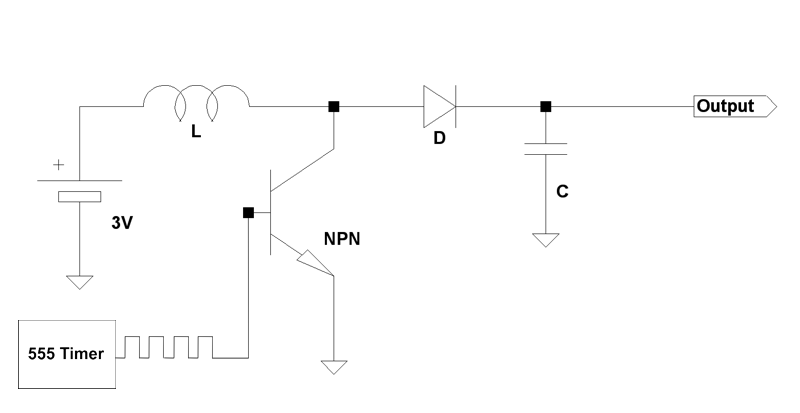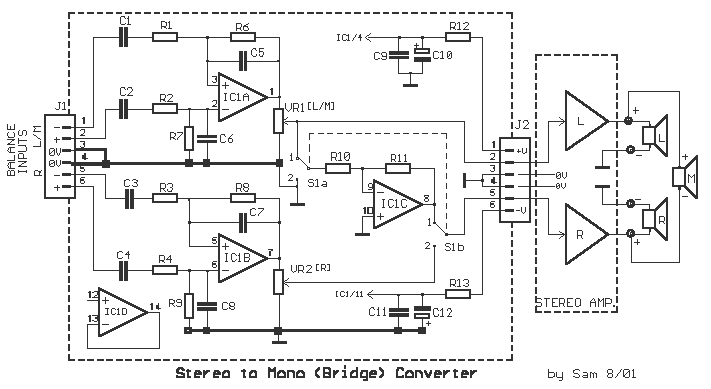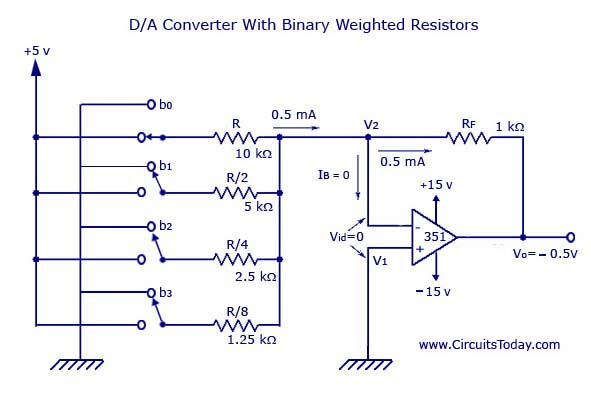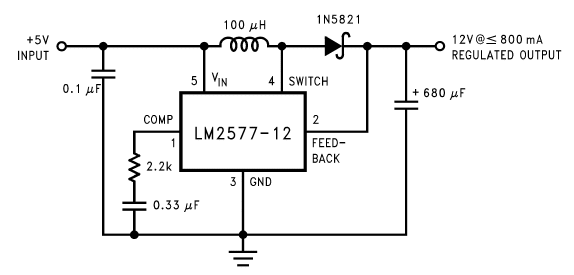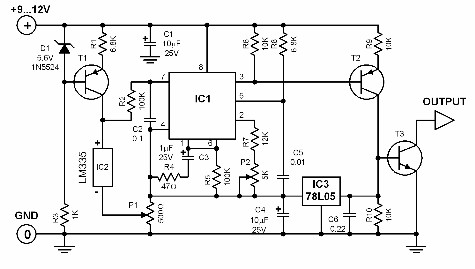
Voltage-To-Frequency Converter I
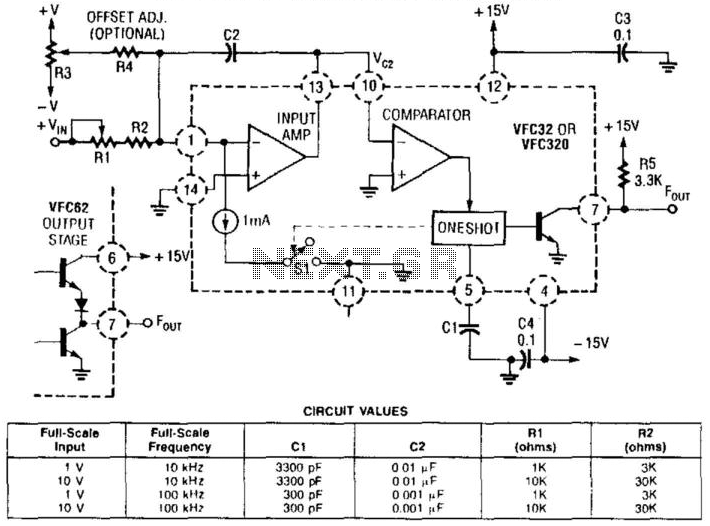
This voltage-to-frequency converter utilizes a Burr-Brown VFC 32 integrated circuit (IC) and requires minimal components. The circuit values are illustrated in the accompanying figure. This charge-balanced voltage-to-frequency (V/F) converter employs either a VFC32 or a VFC320 IC. The positive charge generated from the 1-mA current balances the negative charge from the input. The waveforms associated with the V/F converter are depicted in Fig. 100-l(b).
The voltage-to-frequency converter circuit based on the Burr-Brown VFC 32 IC is designed to convert an input voltage into a corresponding frequency output. This functionality is particularly useful in applications where analog signals need to be processed digitally. The circuit operates on the principle of charge balancing, which is essential for maintaining accuracy and stability in the conversion process.
The VFC 32 IC features a high level of integration, allowing for a compact design with fewer external components. The primary components include the VFC 32 IC itself, a resistor to set the output frequency range, and capacitors for stability and filtering purposes. The key parameter in this configuration is the 1-mA current source, which plays a crucial role in balancing the charge. By ensuring that the positive charge produced by this current source is equal to the negative charge from the input voltage, the circuit achieves reliable performance across varying input conditions.
The output of the V/F converter is a frequency signal that can be easily processed by digital systems, such as microcontrollers or digital signal processors. The waveforms produced by the V/F converter illustrate the relationship between the input voltage and the output frequency, providing a clear representation of the conversion process. This circuit is particularly advantageous in applications such as sensor interfacing, where it is necessary to convert varying analog signals into a format suitable for digital processing. Using a Burr-Brown VFC 32 IC, this voltage-to-frequency converter uses few components. The circuit values are shown in the figure. This charge-balanced V/F converter uses a VFC32 or a VFC320 IC. The positive charge from the 1-mA balances the negative charge from the input. V/F converter waveforms are shown in Fig. 100-l(b).
The voltage-to-frequency converter circuit based on the Burr-Brown VFC 32 IC is designed to convert an input voltage into a corresponding frequency output. This functionality is particularly useful in applications where analog signals need to be processed digitally. The circuit operates on the principle of charge balancing, which is essential for maintaining accuracy and stability in the conversion process.
The VFC 32 IC features a high level of integration, allowing for a compact design with fewer external components. The primary components include the VFC 32 IC itself, a resistor to set the output frequency range, and capacitors for stability and filtering purposes. The key parameter in this configuration is the 1-mA current source, which plays a crucial role in balancing the charge. By ensuring that the positive charge produced by this current source is equal to the negative charge from the input voltage, the circuit achieves reliable performance across varying input conditions.
The output of the V/F converter is a frequency signal that can be easily processed by digital systems, such as microcontrollers or digital signal processors. The waveforms produced by the V/F converter illustrate the relationship between the input voltage and the output frequency, providing a clear representation of the conversion process. This circuit is particularly advantageous in applications such as sensor interfacing, where it is necessary to convert varying analog signals into a format suitable for digital processing. Using a Burr-Brown VFC 32 IC, this voltage-to-frequency converter uses few components. The circuit values are shown in the figure. This charge-balanced V/F converter uses a VFC32 or a VFC320 IC. The positive charge from the 1-mA balances the negative charge from the input. V/F converter waveforms are shown in Fig. 100-l(b).
